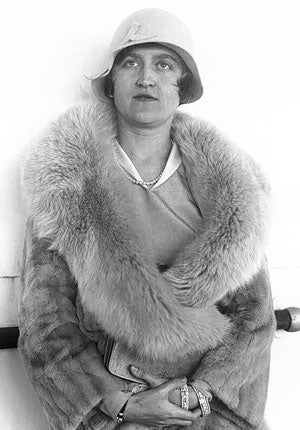Huguette Clark: Heiress to a 'robber baron' fortune who spent 80 years in gilded isolation

She was heiress to one of America's greatest "robber baron" fortunes of the 19th century. She spent most of the 20th century as a recluse, the owner of lavish estates in Connecticut and California where she did not set foot in 50 years, and died early in the 21st century in an unassuming room in a Manhattan hospital where she had lived under a false name, shrouded in mystery and solitude. Whether Huguette Clark was happy or sad in her strange existence may never be known. But with her has vanished one of the very last remaining links with the New York of the Gilded Age, populated by Fricks and Guggenheims, Astors, Rockefellers and Vanderbilts – and the Clarks.
Huguette grew up in a Beaux Art-style house on the corner of Fifth Avenue and 77th Street that reputedly cost more to build than Yankee Stadium and boasted four galleries, 121 rooms, Turkish baths and a rotunda, before it was demolished soon after her father died there of pneumonia in 1925. Her last abode in the outside world, before she checked herself in 1987 into the first of a series of private hospitals (even though apparently in good health), was a 42-room apartment, reputed to be the largest on Fifth Avenue, where she lived with her collections of dolls and dolls houses, and the remnants of the fabulous art collection amassed by her father.
He was William Andrews Clark,one of the original Montana "copper kings", whose empire grew to embrace banks, gold and property, and whose railroad put the desert settlement of Las Vegas on the map. Clark County, where the booming city now stands, was named after him.
Ruthless and unprincipled, William Clark built a fortune worth over $3bn in today's money. He bribed his way into the US Senate in 1899, when its members were still appointed by state legislatures. "I never bought a man who wasn't for sale," Clark would say. Mark Twain was less kind, calling the mogul "as rotten a human being as can be found anywhere under the flag." He was, the author wrote, "a shame to the American nation", whose proper place was behind bars.
In 1900, after the US constitution was changed, Clark was elected torepresent Montana in Washington by the current system of a popular statewide vote – only to alienate public opinion by announcing in 1901 that he had remarried, to his former ward Anna Lachapelle. She was 23 at the time, he was 62.
Huguette was their second child, born in 1906. Her childhood was mostly spent in the garish hotel de ville at 952 Fifth Avenue, interspersed with stays in France and at her father'sestate in Santa Barbara, California. By the time William Clark died, Huguette was regarded as one of the most eligible young ladies in New York, and in 1928 she married William Gower, the son of one of her father's business associates. But the union was dissolved two years later on the grounds, it was said, of non-consummation.
At that point, aged 24, Huguetteeffectively withdrew from normal human society. The last known photo of her, decked in jewels and furs and almost defiant, dates back eight decades, to 1930. Her beloved elder sister Andree had died in 1919 of meningitis, and by the mid-'30s most ofher half-siblings from her father's first marriage were dead as well. She lived with her mother in the huge FifthAvenue apartment, painting and playing the harp.
Her mother's death only deepened her isolation. Her contacts werelimited to a few trusted retainers.She was never seen outside. "Her world was always very small," according to a relative. "When Anna died, it justbecame smaller." Huguette ate frugally, and watched cartoons on TV – most avidly The Flintstones – while amaid religiously ironed the dresses of her dolls.
The opulent homes on the East and West coasts were maintained insimilarly meticulous fashion even though their owner was never there. As a child, Huguette and her family would arrive in Santa Barbara every winter in a private railcar, but her last recorded visit to the estate was in 1952. Even so, the 22,000 square foot property, overlooking the Pacific Ocean and valued at $100m, was kept in immaculate order – as if a telegram might arrive at any moment announcing her imminent arrival.
In the last two years, the unseen heiress did acquire a measure ofunwanted celebrity, after MSNBCrevealed her self-imposed isolation and distant relatives accusedher lawyer and accountant of possible mismanagement of her fortune, estimated at $500m or more. Butaccording to the cable news channel the relatives were turned awaywhen they tried to visit her at BethIsrael Medical Center.
Huguette Clark's final alias was "Harriet Chase". Her room was on the hospital's third floor. It bore the false number "1B" and had the name "Chase" taped to the door.
Rupert Cornwell
Huguette Marcelle Clark, heiress: born Paris 9 June 1906; married 1928 William Gower (divorced 1930); died New York City 24 May 2011.
Join our commenting forum
Join thought-provoking conversations, follow other Independent readers and see their replies
Comments